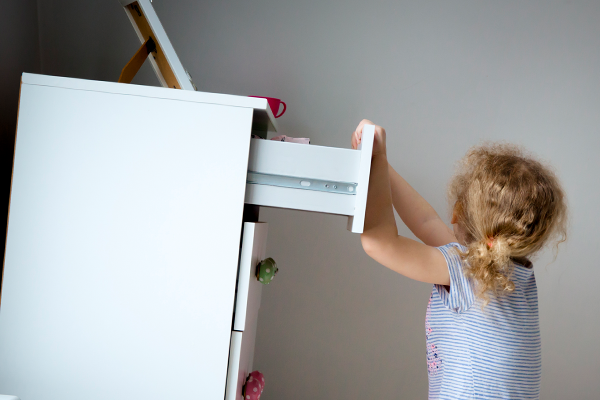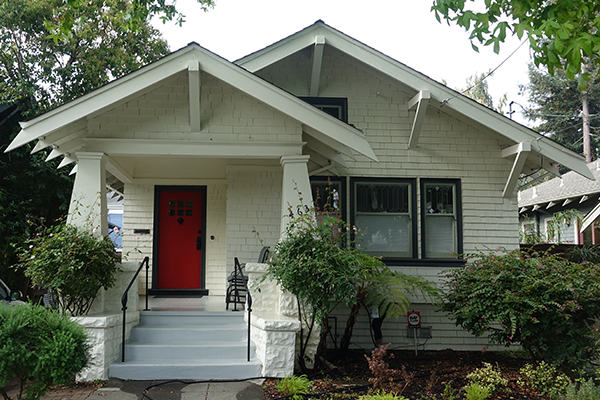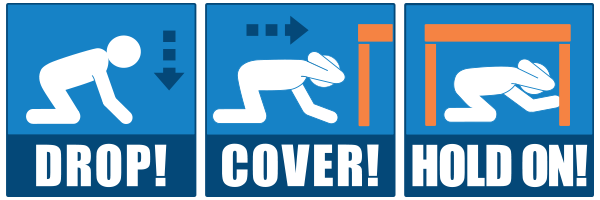Precautionary measures to take before an earthquake strikes
Following earthquake safety precautions could mean the difference between your physical safety and injury, and between property damage and devastating financial loss. With a safety plan in place, proper supplies, and securing your home against hazards, you can increase your chances of riding through a major earthquake safely.
What you should do before an earthquake
The steps you take before an earthquake may have the biggest impact on your safety and the protection of your personal property. Top earthquake safety precautions include:
- Create an earthquake safety plan for you and your loved ones, including pets.
- Identify safe places in each room of your home.
- Practice Drop, Cover, and Hold On with each member of your household.
- Make or purchase an earthquake safety kit.
- Find out if your home is in need of earthquake retrofitting and eligible for a grant.
- Identify and fix potential earthquake hazards in your home.
- Place a pair of closed-toe shoes near your bed.
- Protect your home investment and bounce back from a devastating earthquake with the best choices of affordable earthquake insurance policies from CEA. Whether you are a homeowner, mobilehome owner, condo-unit owner or renter, buy peace of mind with affordable and flexible earthquake insurance now.
Decrease your risk of damage and injury from an earthquake by identifying possible home hazards:
- Tall, heavy furniture that could topple, such as bookcases, china cabinets, or modular wall units.
- Water heaters that are not up to code by being strapped could rupture.
- Stoves and appliances that could move enough to rupture gas or electrical lines.
- Hanging plants in heavy pots that could swing free of hooks.
- Heavy picture frames or mirrors over a bed.
- Latches on kitchen cabinets or other cabinets that will not hold the door closed during shaking.
- Breakables or heavy objects that rest on high or open shelves.
- A masonry chimney that could crumble and fall through an unsupported roof.
- Flammable liquids, such as painting or cleaning products, which would be safer in a garage or outside shed.
A seismic retrofit involves strengthening your home’s foundation to make it more resistant to shaking. CEA offers earthquake home insurance premium discounts for houses and mobilehomes that have been properly retrofitted. Find out about grants to help for retrofits under the Earthquake Brace & Bolt Program, and the CEA Brace & Bolt program.
Personal Preparedness
Earthquakes strike with little to no warning. Every second counts when the earthquake wave is headed your way. Earthquake precautions begin with the conversations you have with your family members before an earthquake. Create an earthquake safety plan for you and your loved ones which includes your stay-in-place safety kit.
- Be sure to identify safe places in each room of your home.
- Practice Drop, Cover, and Hold On with each member of your household.
- Make or purchase an earthquake safety kit.
- Sign up for an earthquake shake alert for your mobile phone.
- Keep closed-toe shoes by your bed.
- Designate a primary and secondary meeting point, or an out-of-area friend/relative for all parties to check in with by text.
Know Your Risks
Millions of Californians live near an earthquake fault line. Earthquake precautions include your understanding of the potential geologic hazards to your home in case of a major earthquake.
The violent shaking from earthquakes can rupture the earth, trigger landslides and turn the surface of the earth to liquid. Your home also may be vulnerable to serious structural damage if it was built before 1980.
Understanding Your Local Risks & Hazards
California is earthquake country. With nearly 16,000 known faults, each region of the state holds earthquake risk. Most of us live within 30 miles of an active fault.
Know your risk. Understand what to do before an earthquake strikes near you. Find out about faults in your area by visiting the CEA risk map by county link.
Prepare Your House
Begin home safety measures BEFORE an earthquake. Decrease your risk of damage and injury from an earthquake by identifying possible home hazards today.
- Tall, heavy furniture that could topple, such as bookcases, china cabinets, or modular wall units.
- Water heaters that are not up to code and strapped could rupture.
- Stoves and appliances that could move enough to rupture gas or electrical lines.
- Hanging plants in heavy pots that could swing free of hooks.
- Heavy picture frames or mirrors over a bed.
- Latches on kitchen cabinets or other cabinets that will not hold the door closed during shaking.
- Breakables or heavy objects that are kept on high or open shelves.
- A masonry chimney that could crumble and fall through an unsupported roof.
- Flammable liquids, such as painting or cleaning products, which would be safer in a garage or outside shed.
A seismic retrofit involves strengthening your home’s foundation to make it more resistant to shaking. CEA offers earthquake home insurance premium discounts for houses and mobilehomes that have been properly retrofitted. Find out about grants to help for retrofits under the Earthquake Brace & Bolt Program, and the CEA Brace & Bolt program.
What to do during an earthquake
With an earthquake shake alert, you may only have seconds to activate your emergency plan. That is enough time to shelter in place.
- When an earthquake starts, Drop, Cover, and Hold On.
- Grab your emergency preparedness kit.
- Shelter on the ground under a table or desk.
- Keep clear of windows.
- If you’re home, don’t leave.
- Avoid the kitchen, where heavy items could fall from shelves or out of cabinets.
- If you’re in bed, cover your head and neck with pillows.
- If you are home, don’t go outside. Stay off the roads.
- If you’re outside get away from buildings which may collapse. Stay in an open area like a field where there are no trees, buildings or power lines.
- If you’re driving when an earthquake strikes, pull over to a large open area that’s not under trees or power lines. Stay in the vehicle. Don’t drive during an earthquake as roads and bridges can buckle.
- If you’re at school, work or any area with an elevator, don’t take the elevator. Take the stairs.
What to do after an earthquake
Many injuries occur after an earthquake. Aftershocks—following large quakes—can cause damage in their own right. Follow this list of earthquake survival tips:
- Check yourself and others for injuries. Provide first aid for anyone who needs it.
- Call 9-1-1 for seriously injured people.
- Listen to the radio for important information and instructions.
- Drop, Cover, and Hold On during aftershocks.
- Check water, gas, and electric lines for damage.
- If you smell gas, open all the windows and doors, leave immediately, and report it to the authorities.
- Check for cracks and damage to the roof and foundation of your home.
- Be careful around broken glass and debris.
- Stay away from beaches, in case of tsunamis.
- Do not enter damaged buildings and areas.
- Take pictures of the damage, both to your house and its contents, for insurance claims.
- Avoid smoking inside buildings.
- When entering buildings, use extreme caution.
- Avoid driving to keep the streets clear for emergency vehicles.
- Be aware that items may fall out of cupboards or closets when a door is opened.
- Chimneys can be weakened and fall easily.
Do you need earthquake insurance?
It’s not enough to be prepared physically before the ground shakes. It’s also important to take financial precautions with earthquakes. Find an affordable earthquake insurance policy to protect you when the big one hits.
Without earthquake insurance, you place yourself at risk of losing everything. Can you afford to replace or repair your personal property if your home is damaged by an earthquake?
Imagine:
- Having to pay your mortgage for a house that is very damaged and needs to be rebuilt.
- Footing the bill for temporary accommodations.
- Trying you get life back in shape after an earthquake.
CEA earthquake insurance not only helps repair damages. Loss of use coverage covers the costs of temporary shelter and additional living expenses so that families can get back on their feet sooner.
Get an earthquake insurance policy estimate!
CEA affordable and flexible home earthquake policies:
- Offer choices of coverage and deductibles.
- Protect the investment in your home.
- Provide you with peace of mind when, not if, the big one hits.
Whether you are a homeowner, mobilehome owner, condo-unit owner or renter, find out about how to buy the best choices in earthquake insurance. Home insurance policies and tenant insurance doesn’t include earthquake coverage. The homeowner or renter needs a separate or companion earthquake policy to cover damages from an earthquake. Get started today with an estimate.
Without CEA’s affordable earthquake residential insurance, you will be responsible for the cost to repair your home and replace your belongings after a major earthquake. Select from 5%-25% deductibles.
Find out if earthquake insurance is right for you with an estimate today.




